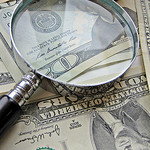Though Congress approved billions in aid for small companies to help them keep paying their employees during the pandemic, there was a big problem: It wasn’t reaching the tiniest and neediest businesses. Then two small companies came out of nowhere and, through an astute mix of technology and advertising — and the dogged pursuit of an opportunity that big banks missed — found a way to help those businesses, the New York Times reported. They also helped themselves. For their work, the companies stand to collect more than $3 billion in fees, according to a New York Times analysis — far more than any of the 5,200 participating lenders. One of the companies, Blueacorn, didn’t exist before the pandemic. The other, Womply, founded a decade ago, sold marketing software. But this year, they became the breakout stars of the Paycheck Protection Program, the government’s $800 billion relief effort for small businesses. Between them, the two companies processed a third of all P.P.P. loans made this year, the Times analysis found. Blueacorn and Womply aren’t banks, so they couldn’t actually lend any money. Rather, they acted as middlemen, charging into a gap between what big banks wouldn’t do and what small banks couldn’t do. First, they unleashed marketing blitzes encouraging freelancers, gig workers, sole proprietors and other small merchants to apply for loans through their websites. Next, they directed those applications to lenders. In return, they took a hefty cut of the fees that lenders made on each loan. “Millions of businesses were being left out,” said Barry Calhoun, the chief executive of Blueacorn, which was founded last year solely to help companies obtain P.P.P. loans. “Tiny businesses, self-employed individuals and minority communities are left out in the cold, over and over and over. Addressing that is a core mission for us.” When the government started the Paycheck Protection Program in April 2020, it quickly found that banks, from national giants to regional players, gravitated to bigger loans to more established businesses because they were easier to make and more lucrative. The program’s largest lender, JPMorgan Chase, refused to even make loans of less than $1,000. To encourage banks to lend to smaller businesses, Congress in December raised the fees for small loans. And in February, the government tweaked the program’s rules so that unprofitable solo businesses, which had previously been ineligible, could get loans. Suddenly, there was a lot of money to be made — if only someone could get businesses in the door. From late February to May 31, when the program ended, the companies processed 2.3 million loans. Most were for less than $17,000, and the vast majority went to solo ventures, which are more likely to be run by women and people of color. All that hustle had downsides, including widespread customer service failures. And some lenders now have regrets about signing rushed deals that delivered most of the profit to their partners.

